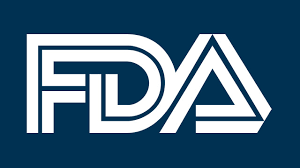Once the Drug Supply Chain Security Act (DSCSA) is fully implemented in 2023, the industry and the consumers will be able to harness the benefits of a safer supply chain. The patients will benefit because it will be easier to identify counterfeit products in the supply chain and remove them. Drug manufacturers will benefit from the detailed data they can use to support sales or marketing campaigns, optimize supply chain management, enhance performance by CMOs, improve management of the cold chain, minimize losses stemming from product diversions or losses, issue returns credits at original prices, or assess product availability. Other supply chain partners will benefit from serialization, too. To make that happen, however, manufacturers, wholesalers, dispensers, repackagers and other participants must live up to their DSCSA responsibilities.
One of the recent IQPS reports gives an insight into the complexities and roadblocks the pharmaceutical industry faces with regards to serialization compliance. The bad news is serialization endeavors look intimidating, but the good news is there exist solutions that help companies implement serialization as smoothly as possible.
Deadlines
Recently, we reported on a serialization readiness survey that found a part of stakeholders would require another 12-24 months to complete their pilot programs and troubleshoot issues. Some companies have not even started, yet, because they are confident the FDA will postpone the November 2017 deadline. This gives a false sense of security.
The serialization requirements for the November 2017 deadline are clear. In 2015, the FDA granted a six-months grace period for manufacturers failing to meet the January 2015 lot-level traceability requirement. Perhaps, it is for this reason that some companies believe the agency would grant another grace period for the November 2017 serialization deadline. However, the agency might not be so inclined to do it this time because we have known about the deadline for four years now, which is enough time to prepare.
What if you are late?
The more there are companies trying to speed up their serialization implementation at the same time (months before the November deadline), the more solution vendors’ resources will be stretched thin. Some vendors reject new clients, others expand their bandwidth by hiring new staff. The new personnel needs the training and experience to be at par with the more experienced peers.
Needless to say what happens when complex strategies are rushed, and serialization is a complex endeavor. Rushed solutions often lack in the planning part. Hurried planning may not account and future-proof for the otherwise predictable future needs, addressing the nearest goals only. Rushed communication may lead to misunderstandings among your internal staff as much as with your partners. Your internal staff needs ample space and time for training and testing your serialization solution. In other words, if you have not started, yet, you need to do it now and maintain a reasonable pace to avoid these hurdles.
Aggregation
Unit-level serialization is clear, but aggregation is an implied requirement. The lack of an unambiguous aggregation requirement in the DSCSA led some companies to believe they do not need to implement it before 2023, which is the deadline for electronic tracking and traceability.
Even if they are right in theory, they are wrong in practice, given the three largest drug wholesalers (the Big 3) demand aggregation as early as 2018-2019. For them, to make serialization feasible they need aggregation information for trading partner sales.
“As a wholesaling community, we have ~58MM saleable returns a year; if we can’t get data, how will we execute the verification of those products?” says Matt Sample of AmerisourceBergen. Based on average estimates, aggregation implementation takes 30% longer to execute.
Manufacturers that have not included aggregation in their 2017 unit-level serialization compliance plan risk facing production disruptions and extra costs incurred by the wholesalers’ requirements to aggregate.
Challenges Beyond Compliance
The unique serialization codes present another challenge. Creating, managing and coordinating the unique serialization codes for individual drug products across the organization (and during each stage of the production process) requires a standard, interoperable and centrally configurable solution.
Integrating different coding formats is a resource-hungry necessity. So is the integration of your serialization solution with your existing enterprise and legacy systems, as well making it work with your third-party partners such as CFAs, 3PLs, and CMOs.
Pharma companies face the challenges of customer connectivity and significantly larger data volumes, which may have an operational impact. Serialization equipment and implementation of software were the initial concerns of many manufacturers. Now that many companies have made progress in this area, the next roadblock is transforming your serialization pilot into an ongoing business operation. When data exchange is implemented on the packaging unit, we face serial number level challenges between trading partners because the manufacturers have many-fold relationships with others in the supply chain.
Therefore, manufacturers should already be in the process of implementing the following:
- deploying the necessary systems to create, randomize, and commission serial numbers
- imprinting serial numbers on unit-level packages
- transmitting Transaction History, Transaction Information, and Statements
- planning for incorporation of warehouse operations to record serial numbers during packing and shipping
The packaging line equipment and systems, serial number repositories and control systems, scanning systems and hardware need interoperable interfaces, so there is the technical and financial challenge.
Training staff and establishing operations that include serialization responsibilities is a formidable organizational challenge.
Challenges Beyond The 2017 Deadline
EPCIS data exchange will continue to be an issue because it is new to the pharmaceutical systems and their business processes. Thorough testing of data exchange ensues. Technical, labeling and data related exceptions might persist past the deadline, says Sample.
Serialization Challenges Facing Contract Partners
Contract partners face mainly IT integration testing challenges that imply artwork change in development and qualification, says Christopher Howell of Patheon. Best practices for the CMOs and pharma companies include early testing, frequent communication with all stakeholders and standardizing GS1 requirements.
About TrackTraceRx Suite
Other solutions on the market today are totally fragmented by only providing one piece of the puzzle. Pharmaceutical companies today are stuck subscribing to multiple services, accessing different companies for support and paying thousands of dollars to integrate different systems. The TrackTraceRx Suite is a game changer by combining the TrackTraceRx Traceability Solution, a ERP, and a Commerce Platform completely integrated out of the box. This eliminates having to deal with multiple support, feature services and integration costs.




